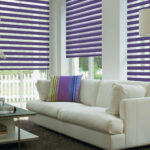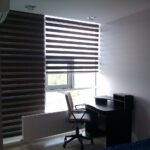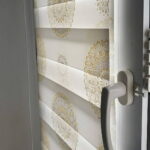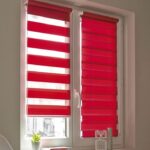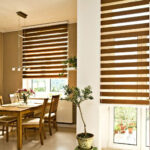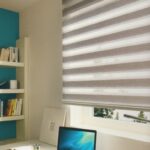Description and fastening of day-night curtains
For homes and offices with windows on the sunny side, the ability to fine-tune the amount of natural light is very important. This avoids not only glare, but also overheating of the air. Modern day-night blinds effectively and gracefully solve the problem due to their original device.
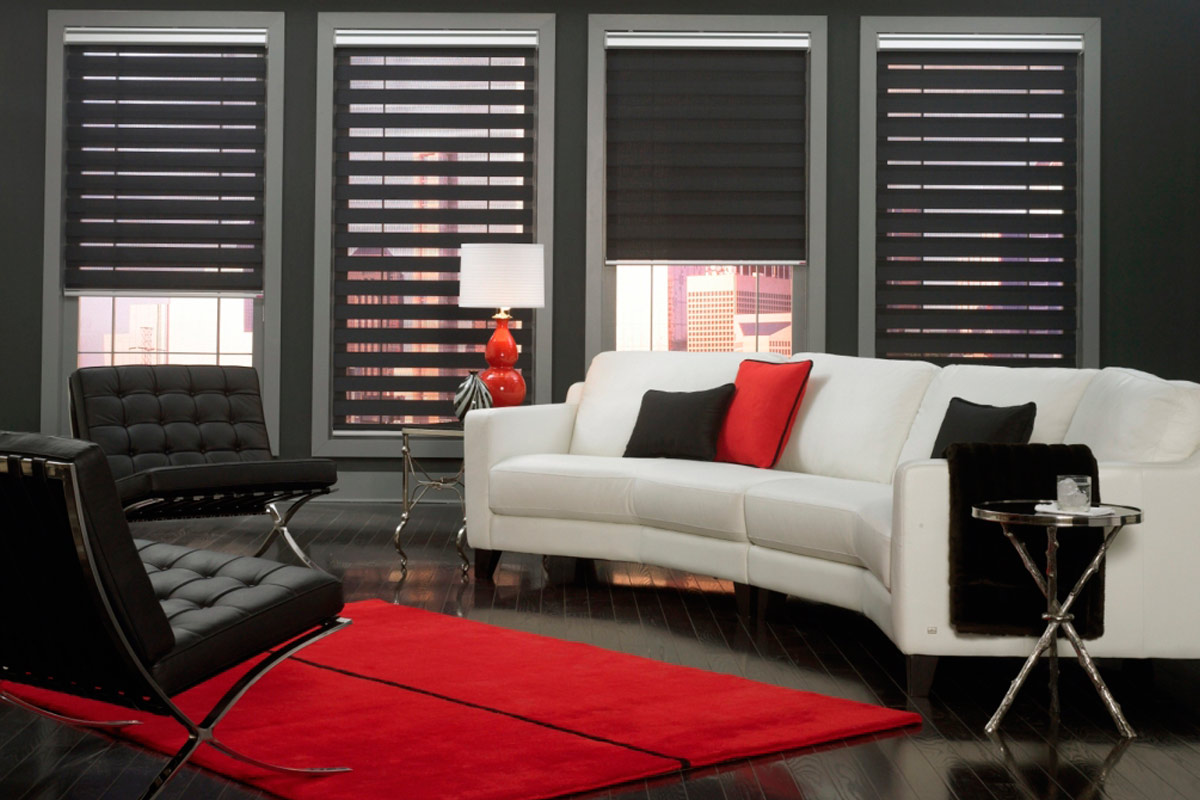
What are day-night curtains
Day-night roller blinds, otherwise called zebra, appeared relatively recently, but have already gained popularity. They are fundamentally different from conventional roller blinds and blinds, combining the advantages of both systems. Their main feature is the ability to regulate the degree of light penetration.
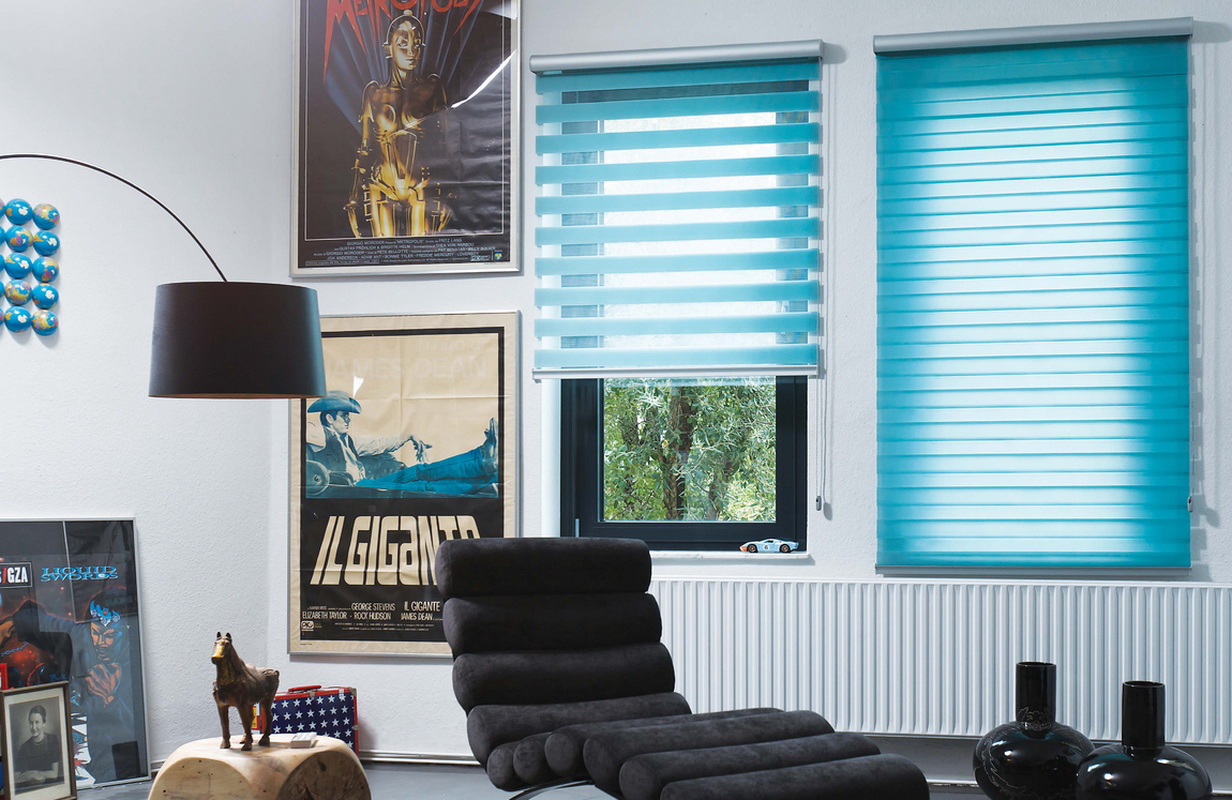
The design of day-night curtains looks like a double woven fabric, on which translucent and transparent horizontally oriented stripes alternate. At the moment of lifting the curtain, carried out by means of a chain, the outer fabric is displaced relative to the inner one. At the same time, light-transmitting mesh strips overlap with dense stripes, changing the intensity of light transmission and illumination. Thanks to these curtains, you can create both a slight blackout (day) and almost complete (night).

Advantages and disadvantages
The benefits of day / night curtains include the following:
- Ease of operation, convenience and practicality. To adjust the luminous flux in the room, there is no need to completely remove the canvas. It is enough to slightly change the location of the stripes, which will get rid of glare.
- Formation of a unique interior. Clear horizontal lines allow you to visually expand the space, making it brighter. Curtains can be of any color and pattern, and they are often made to individual sizes.
- Ease of installation. The system has universal fasteners that allow installation on plastic and wooden frames, walls or ceilings with or without drilling. The design is lightweight and can be easily fixed in any convenient height position.
- Ease of care. The curtains do not need to be removed and washed. It is sufficient to clean them with a vacuum cleaner, damp cloth or soft brush. In addition, the models are covered with special impregnations, which guarantee not only an antistatic effect, which ensures poor accumulation of dust and the difficulty of staining, but also long-term maintenance of the original saturation of the shades.
- Durability. The curtains have a long service life without losing their original characteristics.
Note! The canvas can either perform an independent decorative function or be an addition to curtains or tulle.
A number of disadvantages can also be distinguished:
- High price.It varies depending on the quality of the fabric used, the size and type of fabric. Its value is due to the heterogeneity of the structure and the involvement of a larger amount of tissue.
- Limitations in the variety of fabrics in canvases. Curtains can have only vertical or horizontal "striping".
- Manufacturing complexity for wide non-standard requests. The maximum construction width is limited to three meters.

Roller blinds cannot be fully used in the case of low natural illumination, since they block most of the light flux.
How do they work
The device of roller blinds day-night includes:
- brackets;
- control mechanism;
- lower bar;
- pipe-shaft;
- profile for fabric;
- the cloth.

Day-night fabric is formed from alternating horizontally oriented opaque and transparent stripes with varying degrees of light transmission. The canvas is attached at one end to a special profile, and at the other end to the pipe by means of adhesive tape. At the moment of lifting the curtain, the fabric is wound onto the shaft, while the strips are displaced relative to each other.

What materials are these curtains made of?
The following materials can be used for the production of roller blinds:
- Polyester. It is a practical and durable material with good opacity, high light reflectance and light absorption. It is hygroscopic and form-resistant, which greatly facilitates maintenance.
- Cotton and polyester blend. This type of fabric combines the natural properties of cotton and all the advantages of polyester. Curtains made of this material are not recommended for use in rooms with high humidity, in order to avoid the possibility of strong shrinkage.
- A blend of satin or viscose and polyester. Mixed fabrics have an attractive look and low shrinkage. However, they should not be used in rooms where the curtains are constantly affected by negative factors, for example, saunas and baths. The range of places of application of combined curtains will expand if a protective acrylic layer is applied to the canvas.
- A mixture of plasticized fiberglass and PVC. This material is used in the production of screen curtains. They allow you to make the room obscure from the street, while preserving the opportunity for people in the room to see what is happening outside the window.
- Blend of polyester and polyester. Such material has pronounced antistatic properties, is durable, sun- and dustproof. In addition, it is easy to care for and most often simply dry cleaning is sufficient. Stubborn dirt is removed with a damp cloth.
Zebra fabrics can be of different weights and be:
- thin translucent;
- medium density - semi-darkening;
- "Blackout" - completely blackout.
Components are made of aluminum, steel and plastic. The hardware is usually gray, white, black or brown, but can be made to order in any color.

Varieties of roller blinds day-night
Free hanging
Roller blinds look like two shafts mounted on a bracket. Two different webs of fabric are attached to the shaft by means of an adhesive backing, which are twisted into a roll. Free-hanging blinds do not have fabric attachments. The lower plumb bob and the edges of the web are not secured and remain in a free position if no additional fastening is used.

This type of curtain, equipped with two fabrics, is optimally attached to a ceiling recess, ceiling, wall or slope to cover the entire window opening. This will hide the rolls of fabric for a cleaner installation.
Cassette
Cassette blinds are a more compact system in which fabric rolls are hidden in a decorative box. It is attached to the window sash with double-sided tape or self-tapping screws. In this case, both canvases and the lower plumb lines are fixed in a U-shaped position, which allows for a constant position of the curtain parallel to the sash, even when the window is open for ventilation.

By type of management
By the type of control, all zebras are divided into:
- Manual. In this case, chain control is implemented. It looks like plastic balls strung on a high-strength braided thread. In this case, the control of one part of the product is located on the left, and the other - on the right.
- Automatic. This is a more modern and convenient option. In this case, control is carried out by means of a remote control or a switch located on the wall. A significant advantage of such a system is the ability to control curtains installed on hard-to-reach windows - in stairwells and high from the floor.

Note! Automatic blinds can be connected to the Smart Home system.
How to properly fix the curtains day-night
There are the following options for mounting the roller blind:
- Wall or ceiling. In this case, holes are drilled in the ceiling or wall into which the fasteners are installed. After that, a tripod is fixed on them together with a curtain. This mounting method is the most cumbersome and the blinds take up a lot of space.
- To the window frame. Here, holes are drilled into the window frame. At the same time, it is important to be extremely careful, carefully calculating all the parameters, since the plastic frame can be easily damaged during the installation of light filters.
- On the sash. It has the same principle as mounting to the frame. At the same time, the maximum saving of window opening space is realized and it becomes possible to open the window without raising the curtain.
- No drilling. This type of fastening is usually used for mini-cassette curtains. It is not highly reliable, but it allows you to preserve the integrity of the window. The mechanism is fixed by means of reinforced double-sided tape or special glue. Additionally, there is the possibility of mounting using special brackets.
To the ceiling
For ceiling mounting, clips and hardware are required. The order of work is as follows:
- fix the brackets with self-tapping screws;
- insert the top bar into the top of the clip;
- press vigorously with your finger on the lower part of the clip;
- press the bar until it clicks.

To the window frame
First, you need to carry out the markup, which depends on the desired installation location:
- in front of the window opening - the width of the curtains should exceed the width of the window by 4-5 cm on the sides, the height - by 10 cm, while the window should open normally;
- in the opening - the width of the window, as well as the height, must exceed the width of the roller shutter by 2 cm at each edge;
- on the sash - the width of the blinds should exceed the dimensions of the glass by 3 cm, the height - by 12 cm.
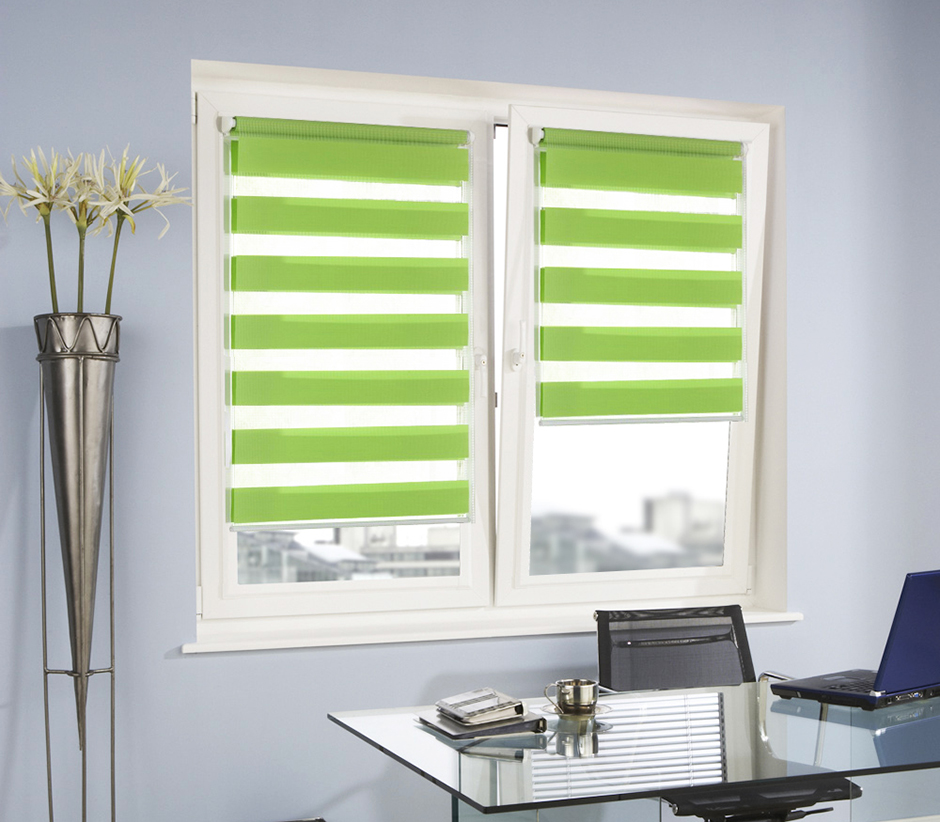
Note! In the case when the windows are placed flush with the blinds, the window handle and hinges must allow free lowering of the canvas and the use of the curtains.
The order of work is as follows:
- Mark the location for the first fastening of the bracket.
- Drill a hole at this point and insert the dowel.
- Screw on the mount.
- Install the second bracket.
- Place the auxiliary attachment 12 cm from the adjustment chain, as this is where the machine is most stressed.
- Install the roller blind into the brackets from the position of the control mechanism.
- Install the correctors and check the installation.
- Fasten the bracket covers.

Note! Correct installation of the curtain is indicated by a clear click.
Installation of day-night roller blinds on plastic windows increases the comfort of being in a sunny room, ensuring optimal lighting control. With careful work, the installation of the structure can be carried out independently.
Video: installing roller blinds day to night on windows





